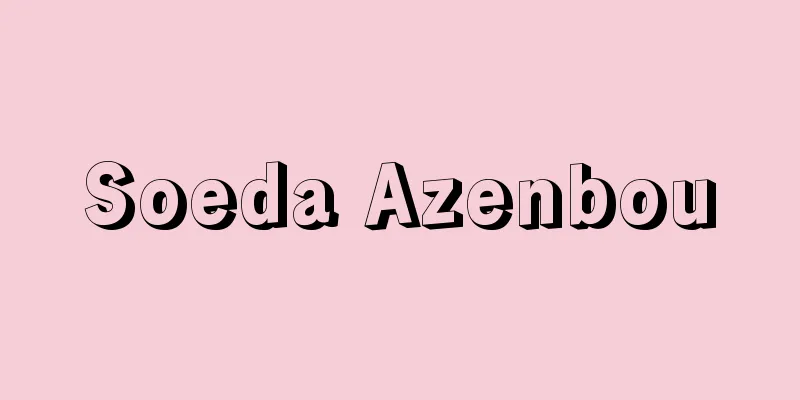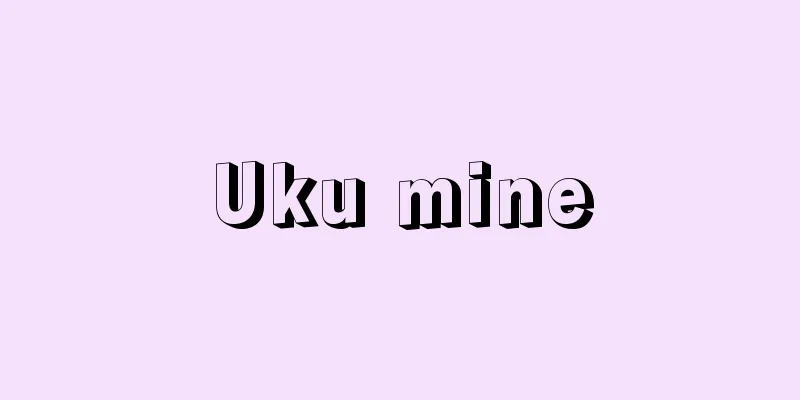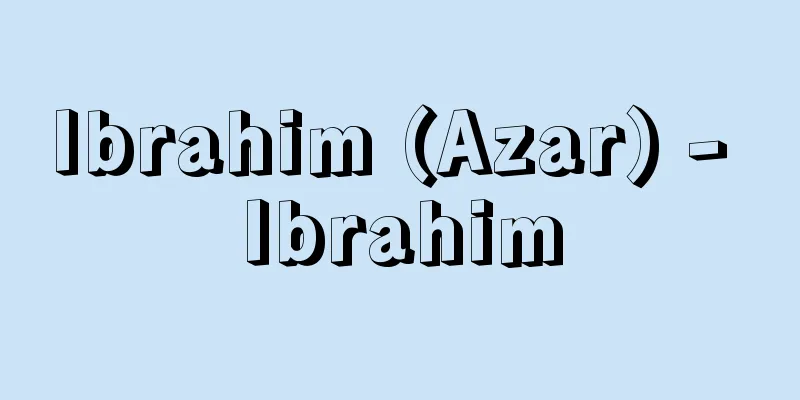Republic of the Gambia

|
A republic located at the western end of West Africa. Its long and narrow land area along the Gambia River is shaped like a finger poking into Senegal. Its area of 11,295 square kilometers is smaller than Niigata Prefecture. Its population is 1.51 million (2006 estimate), 1.7 million (2009 estimate). The population density is 151 people per square kilometer (2009). It gained independence as an autonomous country within the Commonwealth of Nations in 1965, and became a republic in 1970. Its capital is Banjul (formerly Bathurst) on Saint Marie Island at the mouth of the Gambia River, and its population is 406,000 (2007 estimate). About half of the population are farmers, mainly cultivating groundnuts. Its per capita gross national income (GNI) is low at $390 (2008). There have been multiple plans to merge with the surrounding Senegal. In 1982, the nation was unified to form the Senegambia Federation, but the union was annulled in 1989. [Hiroshi Fujii] NatureThe country's territory stretches 20 to 50 kilometers wide along the 470-kilometer-long middle and lower reaches of the Gambia River, and the alluvial plains along the coast are covered with cultivated land and sparse forests. Mangroves can be seen on the riverbanks and coasts downstream, which are influenced by seawater. The Gambia River has no rapids or waterfalls and has a large amount of water even in the dry season, so a 3,000-ton ship can travel 280 kilometers upstream to Georgetown. The country has a tropical Sudanese climate (tropical precipitation unstable climate), a type of savanna climate, with a clear dry season (November to June) and rainy season (June to October), and an annual precipitation of around 1,200 mm. If there is no rain during the rainy season, drought damage often occurs. It is extremely hot from March to June, but it is relatively cool and comfortable from December to April of the following year. [Hiroshi Fujii] historyIn the mid-15th century, Portuguese ships entered the cove at the mouth of the Gambia River, and from 1588 it came under the control of British merchants, unloading slaves and ivory. From the late 17th century to the late 18th century, it was a battleground between Britain and France, but after 1783 it became a British colony, and in 1889 an agreement with France established the border with Senegal. After World War II, the country took a step towards self-government with the establishment of a constitution in September 1954, a new constitution was issued in April 1962, and internal autonomy was granted in October 1963. On February 18, 1965, it became an independent country within the British Commonwealth of Nations. In April 1970, it was declared a republic, and the first president was Sir Dawda Jawara (1924-2019), the prime minister and leader of the People's Progressive Party (PPP). In February 1982, the "Senegambia Federation" was established through integration with Senegal, but a conflict arose between Senegal, which advocated complete integration, and Gambia, which advocated maintaining sovereignty, leading to the annulment of the agreement in 1989. In July 1994, Jawara was ousted in a military coup, and Lieutenant Yahya Jammeh (1965-) became chairman of the Governing Council, and vowed to draw up a constitution and transfer to civilian rule by July 1996. [Hiroshi Fujii] Politics and EconomyIn August 1996, a new constitution was established by referendum. In September of the same year, a presidential election was held under the constitutional multi-party system, with Jammeh of the Alliance for Patriotic Reconstruction (APRC) winning and taking office as president in October. In the January 1997 parliamentary election, the ruling APRC won 33 of the 49 seats, with the remaining seats being the United Democratic Party with 7 seats and the National Reconciliation Party with 2 seats. In September 1996, the government announced a long-term plan called "Vision 2020". Its goals include infrastructure development, promotion of industrialization, and increased agricultural production. Jammeh was re-elected in the presidential election held in October 2001. Jammeh was also elected in the September 2006 presidential election (for a third term), and the ruling APRC won the following January 2007 parliamentary election. In terms of industry, it is a peanut monoculture country, with peanuts accounting for 80% of the cultivated area, and peanuts and peanut oil accounting for 18% of the total export value. Other commercial crops include oil palm, cotton, lime, tobacco, and cashew nuts, and self-sufficiency crops include rice, foxtail millet, sorghum (a cereal grain of the grass family), corn, cassava (a rootstock crop native to South America. The roots are edible and are used to make tapioca), and bananas. Livestock farming is also thriving, with 330,000 cattle and 430,000 sheep and goats. Mahogany is a useful timber material, and is used for furniture and containers. Freshwater and coastal fishing are practiced, and shrimp are caught. There is no underground resource worth seeing yet, but oil exploration is underway. Industry is underdeveloped, with only peanut and oil palm oil refineries and seafood processing plants. Export items include groundnuts and groundnut oil (32.8%), marine products (25.6%), and import items include daily industrial products, foodstuffs, and machinery. The trade balance is a large excess of imports. The main export partners are Senegal, the UK, and France, and the main import partners are Denmark, China, and the UK. As with other West African countries, Lebanese merchants are active. Trade with Senegal is conducted in a way that is not recorded in the statistics. River transportation is well developed, and Banjul is the main trading port, and there is also an international airport. [Hiroshi Fujii] Society and CultureThe population is made up of several tribes, including the Mandingo (42%) who live from the center to the west, the Pool (18%) in the east, the Wolof, Serer, Jiula, and Aku (descendants of freed slaves). Although each tribe's language is spoken, the official language is English. 90% of the population is Muslim, with the remainder being Christian or animistic. The annual population growth rate is high at 2.7%. The average life expectancy is 56 years for men and 57 years for women (2007). The number of people per doctor is 14,536 (1996). In terms of education, there is a technical school, a junior high school, a high school, a normal school, and an agricultural college, in addition to the compulsory elementary school. The elementary school enrollment rate is 74% (2006). Gambia still has a criminal law that makes homosexuality illegal, and in 2008 President Jammeh stated that homosexuals would be deported or beheaded (death penalty), drawing protests from international human rights organizations. There are state-run and commercial radio and television stations, and there are government newspapers and several general newspapers. Kunta Kinte Island and Associated Archaeological Sites and the Senegambia Stone Circles are registered as UNESCO World Heritage Sites (cultural heritage). The first president, Jawara, visited Japan three times and received cooperation in fisheries technology from Japan. In trade, Indonesia imports steel sheets, synthetic textiles, automobiles, and other products from Japan, resulting in an export surplus to Japan. [Hiroshi Fujii] "The Delightful Story of the Founding of the Gambia" by Berkeley Rice, translated by Toshihide Sugibe (1968, Asahi Shimbun) [References] | | [Additional information] |"> Gambia flag ©Shogakukan Illustration/Shogakukan Creative "> Gambia Location Map Source: Shogakukan Encyclopedia Nipponica About Encyclopedia Nipponica Information | Legend |
|
西アフリカの西端にある共和国。ガンビア川に沿う細長い国土は、ちょうどセネガルに指を突っ込んだような形をなす。面積1万1295平方キロメートルで新潟県より狭い。人口151万(2006推計)、170万(2009推計)。人口密度は1平方キロメートル当り151人(2009)。1965年イギリス連邦内の自治国として独立、1970年共和国となった。首都はガンビア川河口のセント・マリー島にあるバンジュル(旧名バサースト)で人口は40万6000(2007年推計)。国民の約半分が農民で、主としてラッカセイを栽培する。1人当り国民総所得(GNI)は390ドル(2008)と低い。国土を囲むセネガルとの統合は何度も計画された。1982年に合邦が実現しセネガンビア連邦を発足させたが、1989年合邦破棄。 [藤井宏志] 自然国土はガンビア川中・下流の延長470キロメートルの河谷に、20~50キロメートル幅で細長く延び、沿岸の沖積平野には耕地や疎林が広がっている。海水の影響を受ける下流の河岸や海岸にはマングローブがみられる。ガンビア川は急流や滝がなく乾期にも水量があるので、3000トンの船が280キロメートル上流のジョージタウンまでさかのぼれる。気候は、サバンナ気候の一種の熱帯スーダン気候(熱帯降水不安定気候)に属し、乾期(11~6月)と雨期(6~10月)が明瞭(めいりょう)で、年降水量は1200ミリメートル前後である。雨期に雨がないと干魃(かんばつ)の被害を生じることが多い。3~6月はきわめて暑く、12月から翌年の4月にかけては比較的涼しく過ごしやすい。 [藤井宏志] 歴史15世紀なかばポルトガルの船がガンビア川河口の入り江に入り、1588年からイギリス商人の勢力下に置かれ、奴隷や象牙(ぞうげ)を積み出した。17世紀後半から18世紀後半にかけイギリスとフランスの争奪の場となったが、1783年以後イギリスの植民地となり、1889年フランスとの協定でセネガルとの国境線が確定した。第二次世界大戦後の1954年9月の憲法制定で自治政府への一歩を踏み出し、1962年4月新憲法発布、1963年10月に内政の自治を認められ、1965年2月18日イギリス連邦内の独立国となった。1970年4月には共和国を宣言、初代大統領には首相で人民進歩党(PPP)党首のダウダ・ジャワラSir Dawda Jawara(1924―2019)が就任した。 1982年2月セネガルとの統合により「セネガンビア連邦」が発足したが、完全統合論のセネガルと主権維持論のガンビアが対立し、1989年協定破棄。1994年7月、軍によるクーデターでジャワラは失脚、中尉ジャメYahya Jammeh(1965― )が統治評議会の議長に就任し、1996年7月までに憲法制定、民政移管を行うとした。 [藤井宏志] 政治・経済1996年8月、国民投票により新憲法が成立。同年9月、憲法に基づく複数政党制で大統領選が行われ、愛国再建同盟(APRC)のジャメが当選し、10月大統領に就任した。1997年1月の議会選挙でも与党APRCが49議席中33議席を占め、ほかは統一民主党が7議席、国民和解党が2議席などであった。1996年9月、政府は長期計画「ビジョン2020」を発表。インフラ(経済基盤)整備、工業化促進、農産物の増産などを目標としている。2001年10月に行われた大統領選でジャメが再選された。2006年9月の大統領選挙でもジャメが当選(三選)、翌2007年1月の議会選挙も与党APRCが勝利した。 産業面ではラッカセイが作付面積の80%、ラッカセイおよびラッカセイ油が総輸出額の18%を占めるラッカセイ・モノカルチュア(単一作物生産)の国である。このほか、商品作物としてアブラヤシ、綿花、ライム、タバコ、カシューナッツ、自給作物では米、アワ、モロコシ(ソルガム。イネ科の穀物)、トウモロコシ、キャッサバ(南米原産の根茎作物。根を食用とし、タピオカの原料となる)、バナナなどを栽培する。牧畜も盛んで、ウシ33万頭、ヒツジ・ヤギ43万頭を飼育する。有用木材ではマホガニーがあり、家具や容器になる。淡水漁業、沿岸漁業が行われ、エビの漁獲がある。地下資源はまだみるべきものはないが、石油の探査が行われている。工業は未発達で、ラッカセイ、アブラヤシの製油工場や水産加工工場があるのみである。輸出品目はラッカセイおよびラッカセイ油が32.8%、水産物が25.6%、輸入品目は日用工業製品、食料品、機械類などである。貿易収支は大幅な輸入超過である。主要輸出相手国はセネガル、イギリス、フランス、輸入相手国はデンマーク、中国、イギリスである。他の西アフリカ諸国と同様にレバノン商人が活躍する。セネガルとは統計にのらない貿易が行われている。河川交通が発達し、バンジュルが中心貿易港で、国際空港もある。 [藤井宏志] 社会・文化国民は複数の部族からなり、中央から西部へ住むマンディンゴ人(42%)、東部のプール人(18%)をはじめ、ウォロフ、セレル、ジウラ、アク(解放奴隷の子孫)の各部族がある。各部族語が話されるが、公用語は英語である。宗教は90%がイスラム教(イスラーム)で、残りはキリスト教、アニミズムである。年人口増加率は2.7%と高い。平均余命は男56歳、女57歳(2007)である。医師1人当りの国民数は1万4536人(1996)である。教育は、義務教育の小学校の上に工業学校、中学校、高校、師範学校、農業専門学校がある。小学校の就学率は74%(2006)である。ガンビアには同性愛は違法とする刑法が残っており、大統領のジャメは2008年、同性愛者は国外退去あるいは斬首(ざんしゅ)(死刑)にすると述べ、国際人権団体から抗議を受けた。ラジオ・テレビは国営局と商業局があり、新聞は政府紙と数社の一般紙がある。ユネスコの世界遺産(文化遺産)に「クンタ・キンテ島と関連遺跡群」「セネガンビアのストーン・サークル群」が登録されている。 日本へは、初代大統領ジャワラが3回来訪し、日本から水産技術協力を受けている。貿易では日本から鋼板、合繊織物、自動車などを輸入しており、日本の輸出超過である。 [藤井宏志] 『バークレー・ライス著、杉辺利英訳『愉快なガンビア建国記』(1968・朝日新聞社)』 [参照項目] | | [補完資料] |"> ガンビアの国旗 ©Shogakukan 作図/小学館クリエイティブ"> ガンビア位置図 出典 小学館 日本大百科全書(ニッポニカ)日本大百科全書(ニッポニカ)について 情報 | 凡例 |
Recommend
Indanthren Blue
…They are classified into two types based on thei...
Yanoama (English spelling)
An Indian group living in the upper reaches of the...
Yunohira [Hot spring] - Yunohira
This hot spring is located in the southwest of Yuf...
Equilibrium trading volume
…In such a case, the price will continue to fluct...
The theory of appearance
…First, he wrote in Smyrna to the churches of Eph...
Palace (Punishment) - Kyu
… Torture Trial [Yoshio Hiramatsu] [China] The re...
parts of speech
…Words in a category share certain functions (how...
Umewakazuka
A mound in the grounds of Mokuboji Temple in Sumid...
Euclides (of Alexandria) - Euclides
…Greek mathematician active around 300 B.C.E. His...
Keizo Kawashima
...The passionate lovers, the colorful dialogue, ...
Pierre - Pia (English spelling) Pierre
A city in central South Dakota, United States, an...
Rashdall, H.
In the Anglican Church, the Modern Churchmen'...
Ticket issuing system - Hakkenseido (English notation) note issuing system
Historically, there are two systems for issuing b...
Hawk in the Rain
…In 1956, he married the American poet Sylvia Pla...
Clematis tosaensis (English spelling) Clematistosaensis
…[Michio Tamura]. … *Some of the terminology that...









